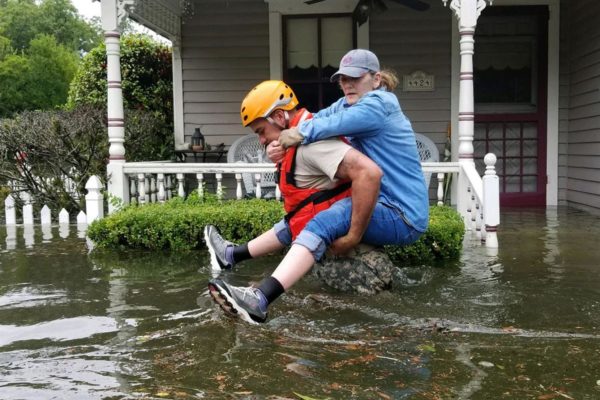AUSTIN, Texas — As Hurricane Harvey struck the Texas coast and inundated the Houston area with rain, residents of the assisted living facility La Vita Bella in Dickinson, Texas, had nowhere to turn as floodwaters began seeping into their facility.
As waters rose, residents and staffers were instructed by overwhelmed emergency dispatchers to remain in the facility until help could arrive.
Then, a family member of the facility’s owner posted a photo to Twitter of residents shown waist-high in murky water, waiting to be rescued. Soon after, the post went viral, with many seeking help from emergency responders and news outlets.
During Hurricane Harvey, victims unable to connect with overloaded 911 call systems turned to social media to plead for assistance. In turn, volunteer groups including the “Cajun Navy” used social media to identify those in need of help and to coordinate rescue efforts.
To study the role of social media in aiding Hurricane Harvey victims, researchers from The University of Texas at Austin’s Moody College of Communication have received a grant from the National Science Foundation (NSF) to study how individuals in need of emergency help use social media. Researchers will also look at how first-responders use social media alongside traditional 911 calls when dispatching help.
“The Changing Nature of ‘Calls’ for Help with Hurricane Harvey: 911 and Social Media” is led by researchers Keri Stephens, associate professor in the Department of Communication Studies; and Dhiraj Murthy, associate professor in the School of Journalism and director of the Computational Media Lab. The $168,000 project will begin Oct. 1.
“Hurricane Harvey is the first disaster where social media calls for help appear to have supplanted the overloaded 911 call systems,” said Stephens, the study’s principal investigator. “But this form of help-seeking behavior on public social media is relatively new. This project will capture the voices of hurricane victims and emergency response workers to help save lives in the future.”
The project will identify common themes in the behaviors, content types and language that disaster victims use in their calls for help on social media. Ultimately, researchers will seek to identify the specific characteristics of calls that disaster victims use when requesting help, so that emergency personnel can rapidly pinpoint individuals in need of the most assistance.
To do this, researchers will conduct field interviews and surveys with Harvey and Irma victims, emergency response organizations and volunteer groups to identify what was posted, where and how these requests generated responses. Crucially, the utility of these posts to disaster victims will also be gauged.
They will then combine survey results with data across several platforms including YouTube, Twitter, Reddit and Facebook.
“This project uses a unique method to study social media conversations by disaster victims,” said Murthy, the study’s co-principal investigator. “The current method most frequently used by scholars is to mine social media data around disaster-related keywords. However, this method pulls in everything — from solicitations for donations to news stories — and it is challenging to isolate actual calls for help.”
Preliminary results of the study will be available in October 2018, and they will be shared in the form of summaries and eventually in research publications.




